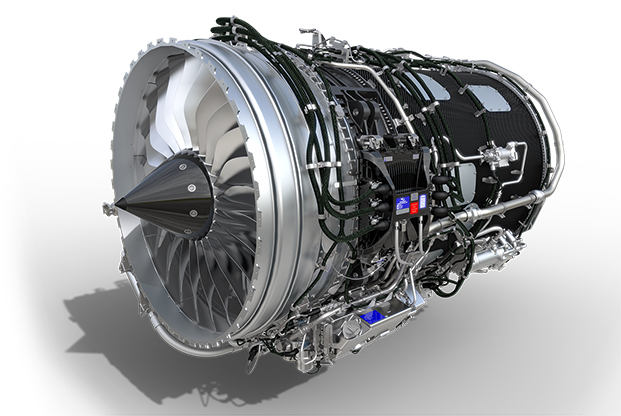
The F130 engine—shown here in a Rolls Royce graphic—has been selected as Rolls Royce's official entry in the B-52 reengining competition. Rolls Royce courtesy graphic.
Rolls-Royce has officially selected the F130, a variant of the commercial BR700, as its entrant in the B-52 re-engining competition, and will build the powerplant at its freshly renovated Indianapolis, Ind., facility if it wins the contract, company Vice President for Military Strategic Systems John Kusnierek told reporters during a telecon Monday.
Rolls said it has invested $600 million over the last few years in its Indianapolis plant, and Kusnierek said the upgrades were designed for “this-sized engine.” The company anticipates it will hire 150 additional engineering, manufacturing, and program management workers in Indianapolis if it wins the B-52 re-engining contest. The facility has new digital design capabilities, as well as improved “efficiency and capacity,” which Kusnierek said will be important for the competition.
Air Force acquisition chief Will Roper said last September he anticipates a “digital flyoff” among competing engines for the B-52 work.
Indianapolis is the site of Rolls’ “Liberty Works” advanced development shop, and the company said it has invested $1 billion in Research and development in the last six years.
Kusnierek said the F130—also flying on USAF’s E-11 BACN and C-37—will undergo final assembly, test, and integration in Indianapolis, but declined to discuss the specific amount of US part content, saying only there is “variety” in the F130 supply chain. The F130 will be an “American” engine, he asserted.
General Electric and Pratt & Whitney also are expected to offer engines for the B-52 program. The fiscal year 2020 defense budget request is expected to offer details on the timeline of the B-52 re-engining program.
The B-52 work “fits perfectly with our plans” for Indianapolis, Kusnierek asserted, and the F130, given its 17,000 pounds of thrust and physical size, is a “perfect fit” for the venerable bomber. The company also produces engines for the C-130J transport, CV-22 Osprey, and Global Hawk remotely piloted aircraft at the Indianapolis facility. Rolls has previously said it would likely offer the F130 for the B-52 contest.
The Air Force is seeking a commercial, off-the-shelf replacement for the Pratt & Whitney TF33 engine, which was original equipment on the eight-engined B-52H, the last of which was built in 1962. The service seeks a one-for-one replacement of the TF33, with new powerplants clustered in four two-engine nacelles per jet. For its fleet of 76 B-52s, the Air Force needs over 600 engines, plus some spares. Rolls pegged the requirement at 650 engines.
Rolls noted that it has amassed 22 million flight hours on the BR700 series, and “over 200,000 combat hours” with the F130 in USAF service. Rolls said it employs 6,000 people in the US, and indirectly supports 52,000 jobs in 27 states.